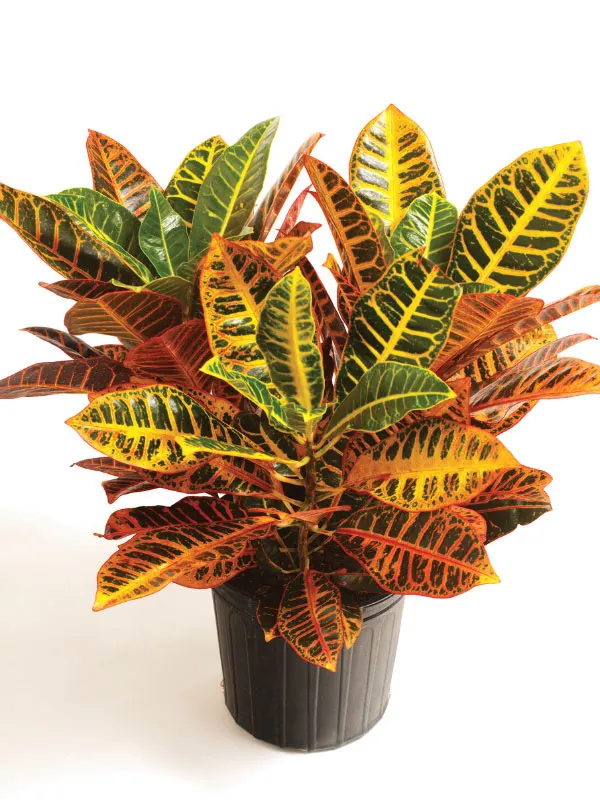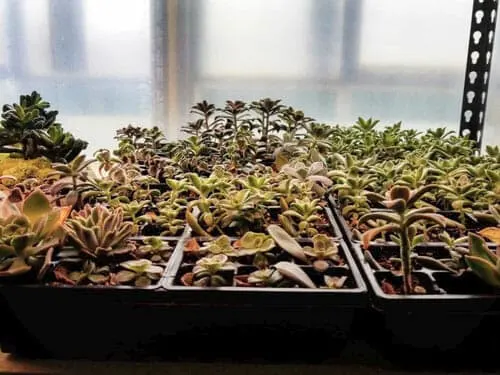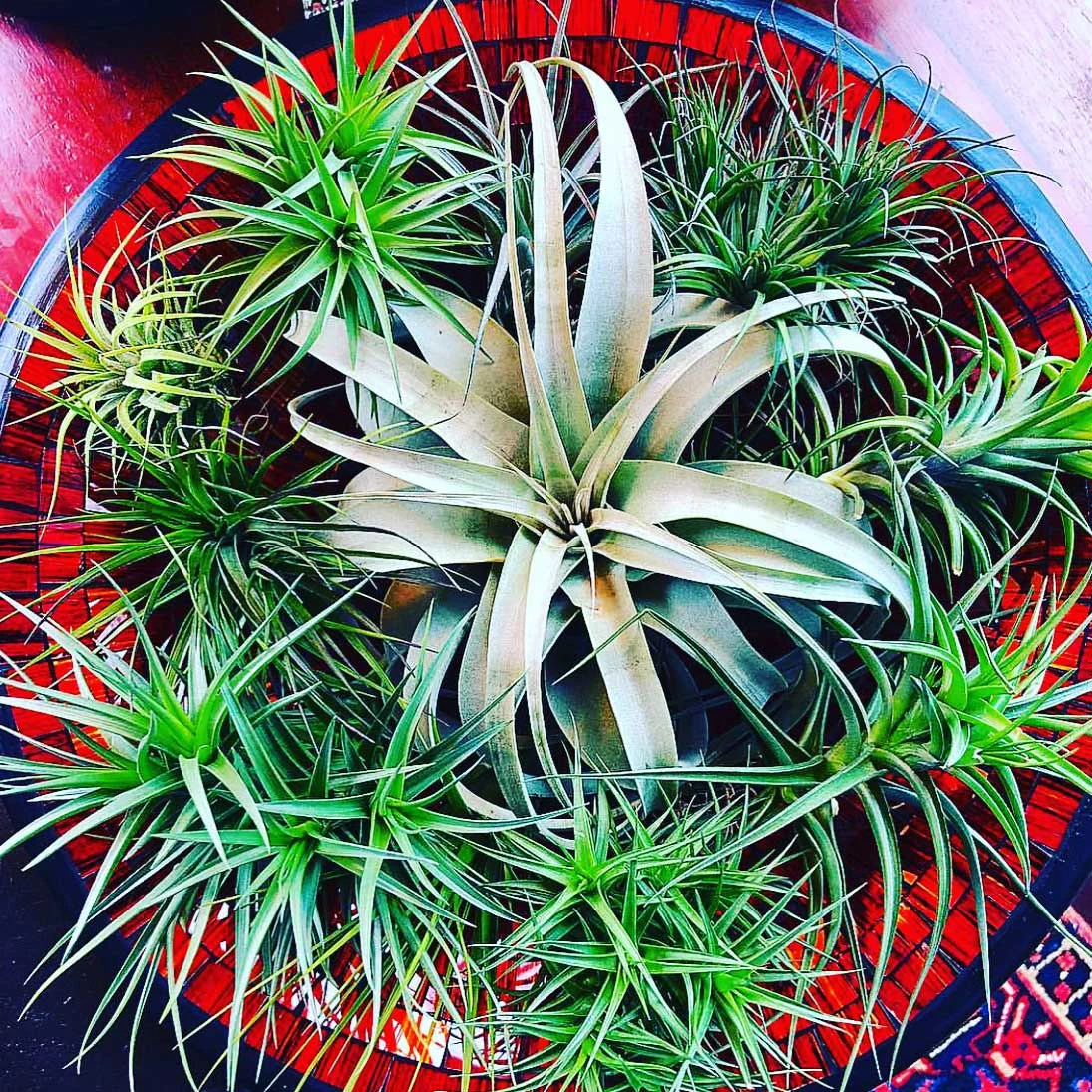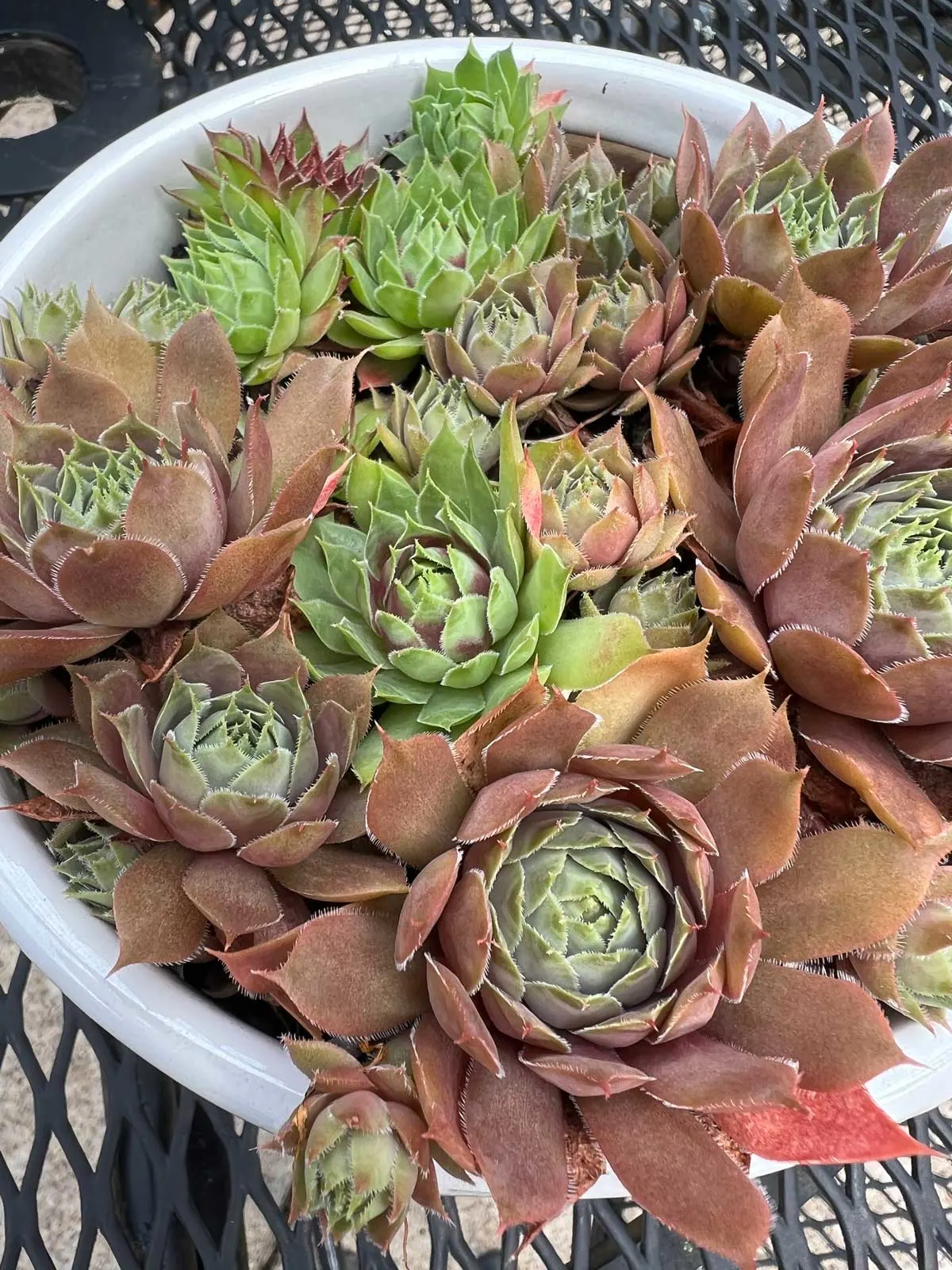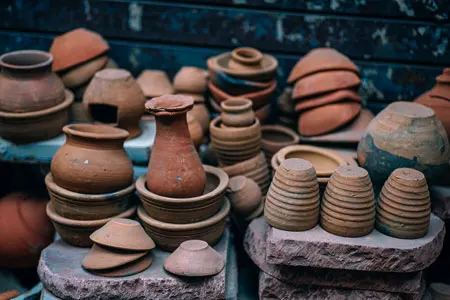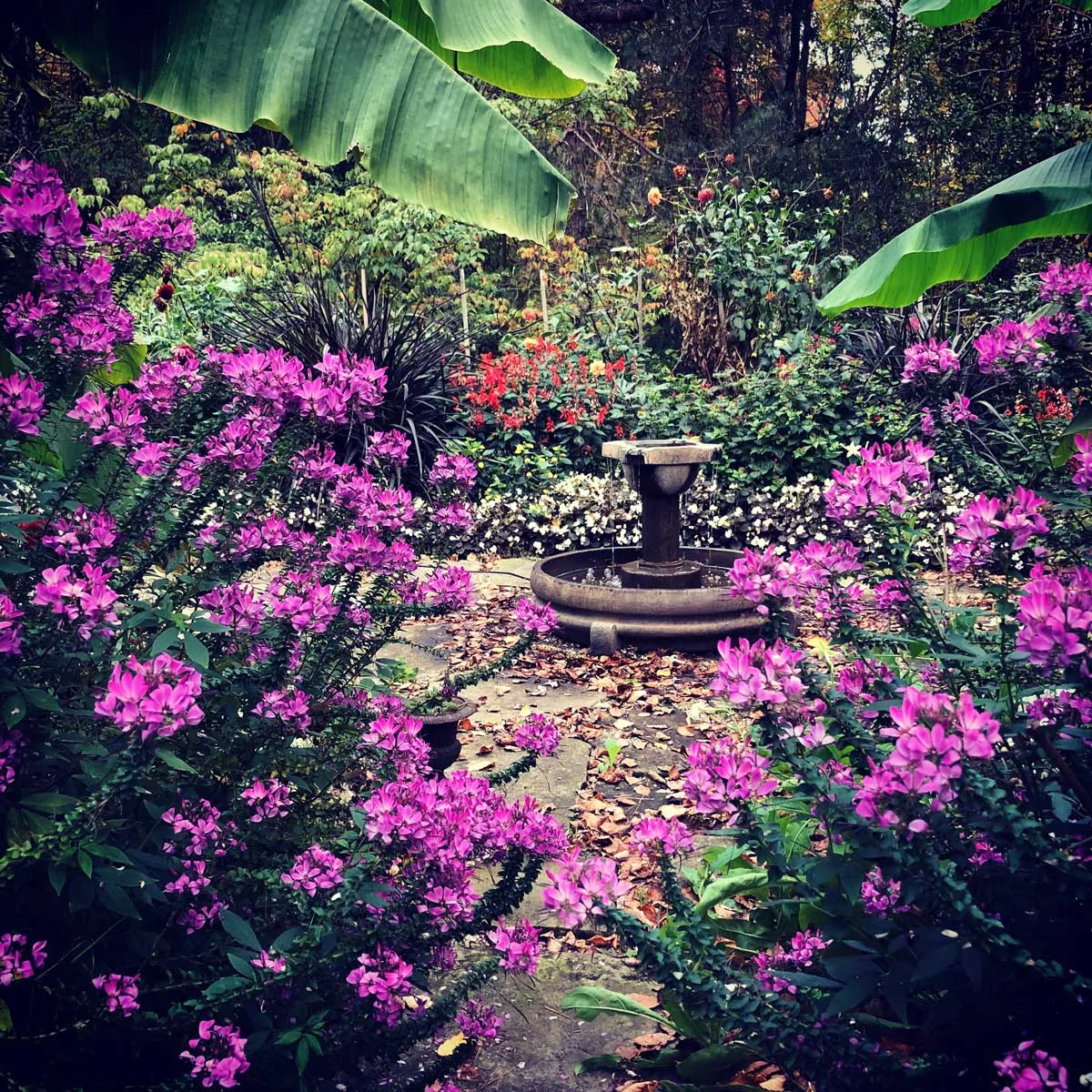Some of the links in this post may be affiliate links.
Echeveria ‘Hercules’ is a very easy care and beautiful succulent that you can easily grow indoors. I purchased mine at a local plant shop and I’ve been enjoying both its beautifully colored foliage as well as the occasional flowers which I find to be gorgeous!
In this post, I’ll tell you all about how I’ve cared for Echeveria ‘Hercules’.
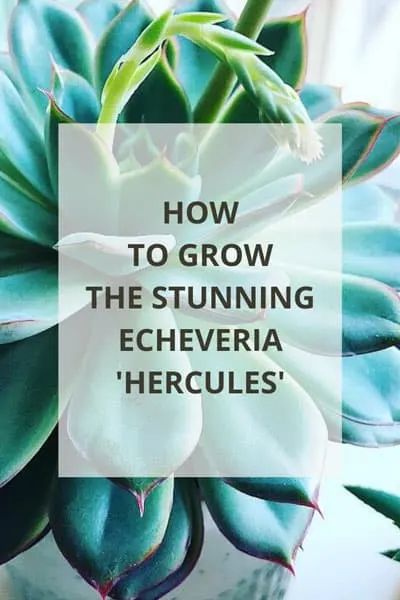
Table of Contents
Echeveria Hercules Care
One of the reasons I love this plant so much is that it has a wonderful, blue-green rosette of tightly packed leaves. The yellow flowers are a bonus!
Commonly called “Mexican Hens & Chicks,” Echeveria can produce pups at the base of the mother plant, and you can leave them or transplant them into their own pots.
1. LIGHT
Like many succulents, this plant needs a good amount of direct sun in order to retain its beautiful color and a nice compact rosette of leaves.
Echeveria and other succulents will stretch out or “etiolate” when enough light is not present.
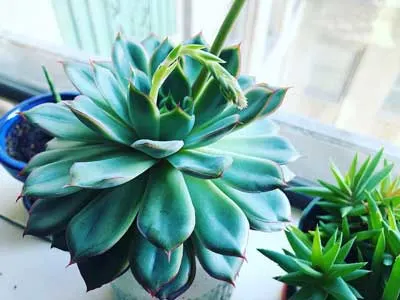
The Echeveria Hercules in the photo above was in my office for a couple years before I took it home. It received probably 3-4 hours of sun (on a good day). It can take more sun, but it was enough to keep the plant compact and not etiolated!
ALWAYS keep your Echeveria right in front of a window. I’d recommend an East or West window, and even South which receives the highest amount of direct sun.
In brighter light, the edges of the blue-green leaves will be pinkish.
If you live in an area with strong sun, you may want to avoid mid-day sun to prevent your plant from burning. The leaves have a coating of wax on them that protects the plant in full sun so it’s not too much of a concern.
2. WATERING
So many people are scared to water succulents from the fear of “overwatering!” Even succulents need THOROUGH watering!
Always water until all the soil is moistened and until water comes out of the drainage hole. Never allow your succulents to sit in water for extended periods.
Allow your soil to become fully dry before watering again.
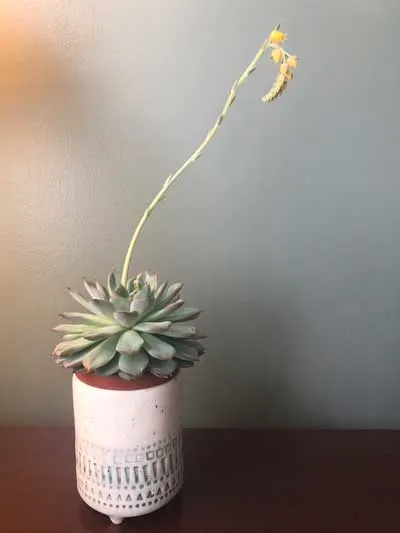
I actually bottom water my own plant because the crown of the plant is very thick and it takes up the entire surface of the pot. The plant is growing in a plastic pot and I have it slipped inside of the ceramic pot.
I simply fill the cermaic cache pot with water, and then gently place the plastic pot that the Echeveria is grow in, into the cache pot with water.
I’ll let it sit for a few hours and until water has absorbed all the way to the surface of the soil, and then I’ll discard the excess water.
Once I repot into a larger pot, I’ll be able to top water which I prefer.
3. FERTILIZING
In general, you want to avoid using high nitrogen fertilizers for succulents.
Schultz Cactus Plus (formulated at 2-7-7) is a great fertilizer for Echeveria.
4. SOIL
Succulents need very sharp drainage and soil that dries quickly in between watering.
I recommend using a 50/50 mix of a good succulent soil and 1/4″ pumice. The resulting drainage is incredible, and a good soil mix is critical for these succulents.
If you’re looking for an amazing potting mix that you can use straight out of the bag for your Echeveria, check out the Desert Succulent Soil Blend from Oh Happy Plants. This is an amazing mix and you will get 10% off at checkout automatically if you use my link.
5. PROPAGATION
There are several ways to propagate your Echeveria.
Sometimes, they will produce pups or offsets at the base. You can leave these, or transplant them into their own pot.
If you have one that has stretched out, you can behead it (I know, it sounds awful!). Allow the cutting to dry a few days, and then simply place it in a pot with soil.
You can also propagate by leaf cuttings. I interviewed a local florist and friend of mine who used to work in a commercial operation where they propagated succulents, and he told me all about how to leaf propagate Echeveria.
ECHEVERIA FLOWERS
Some succulents like Aeonium and Agave are monocarpic, meaning they die after they bloom. Echeverias are not monocarpic, so you can keep enjoying your plant and repeated blooms!
And the flowers are gorgeous!
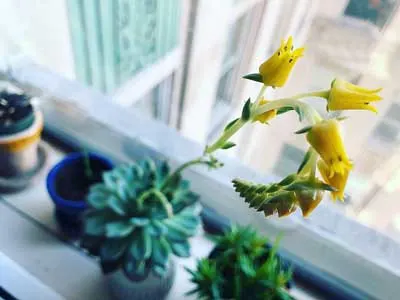
Flowering is triggered by the intensity of light and not necessarily by the length of days. My own plant has flowered multiple times a year and I welcome the blooms every time.
Some people cut off the flowers as soon as they see the flower stalk starting to grow in order to save the plant’s energy.
I personally love the Echeveria flowers so I leave them to enjoy and cut them off only after the flowers are spent.
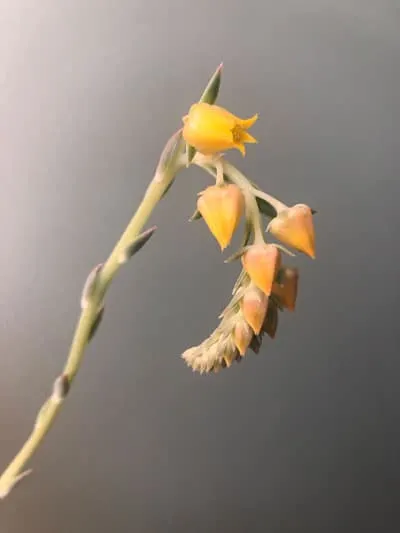
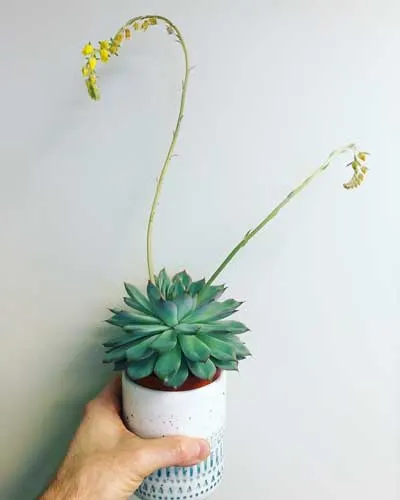
ECHEVERIA TOXICITY
Echeveria is non-toxic to cats and dogs according to the ASPCA.
Do you have an Echeveria Hercules? Comment below. I’d love to hear from you!

